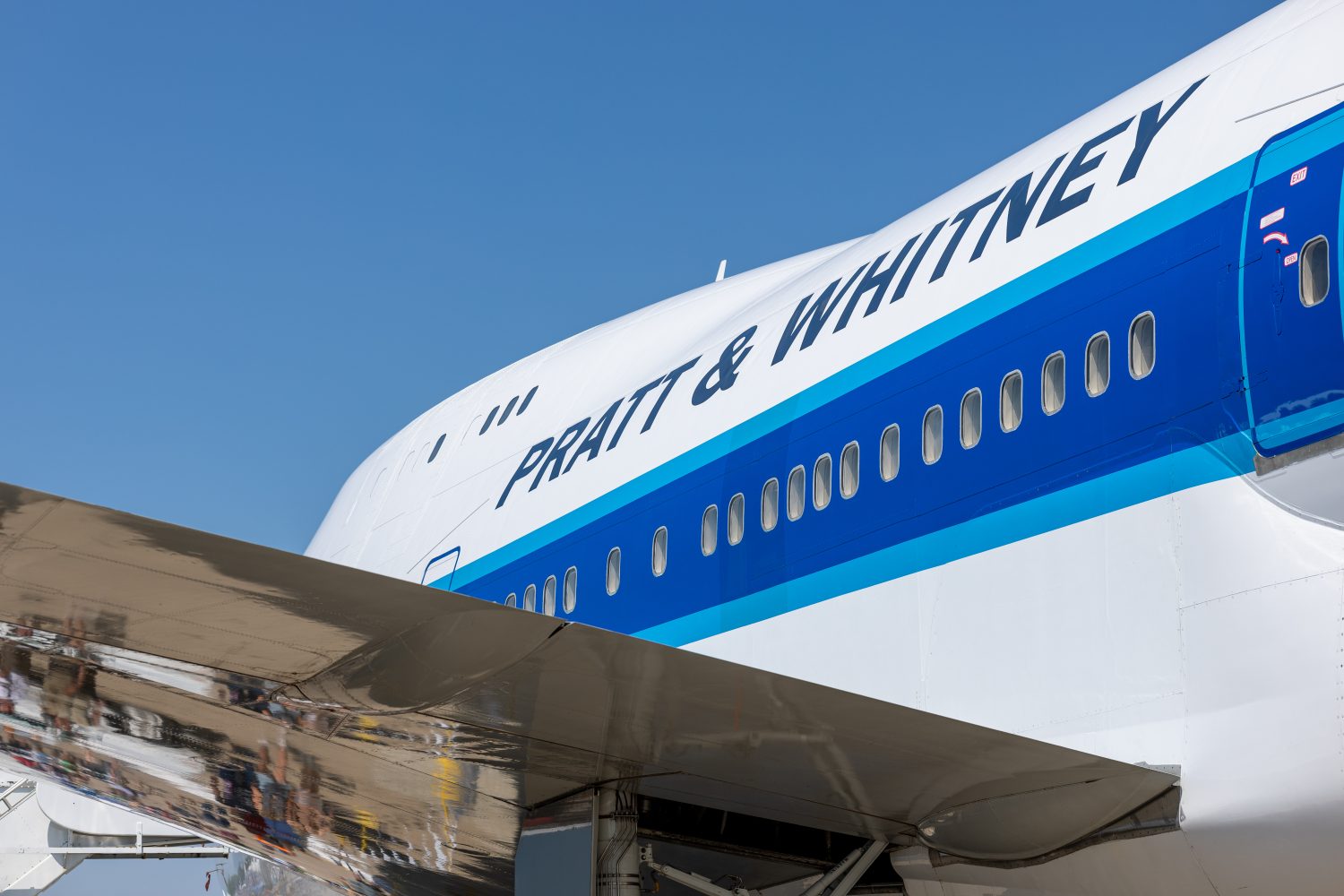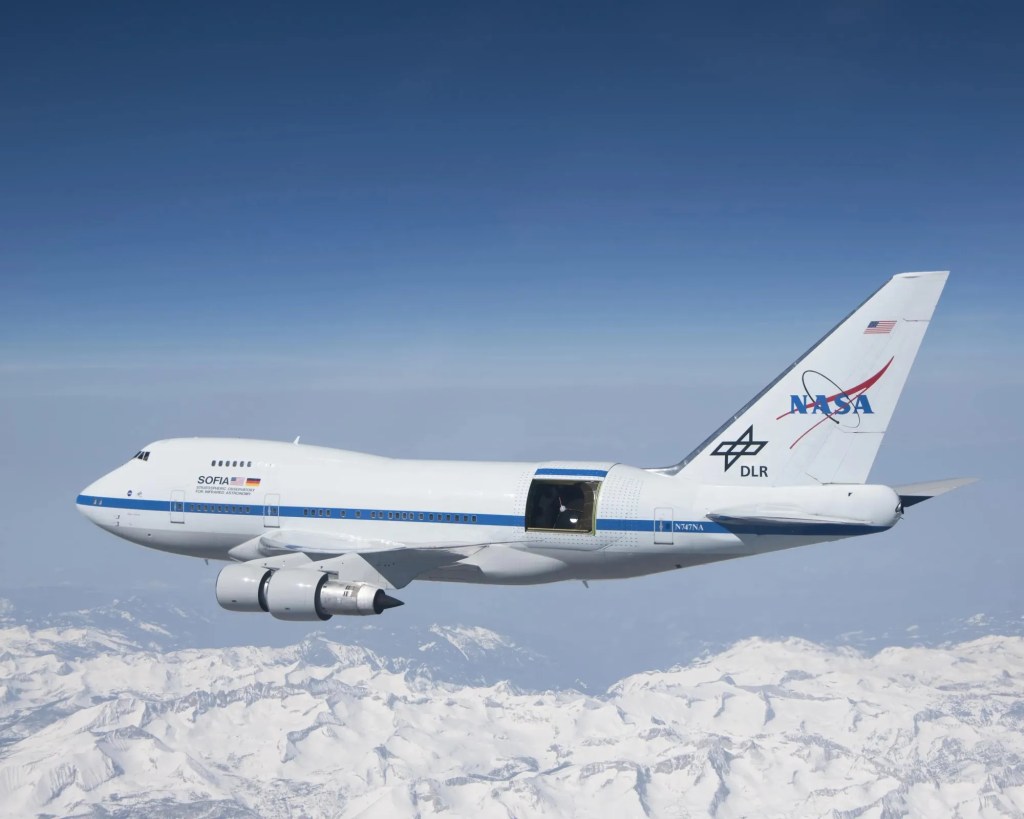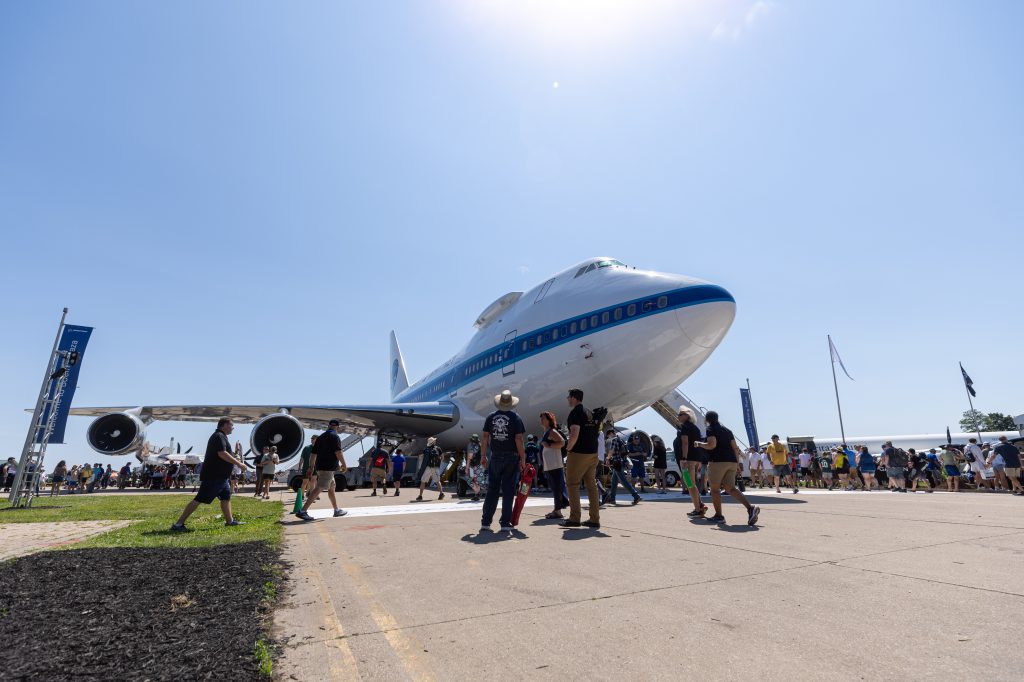
Using telescopes in space is often advantageous to get the best image of interstellar objects. Astronomers place telescopes on mountains in the middle of the ocean or in desert to remove as much as the atmosphere as possible. The middleground? An airplane.
For just eight years, from 2014 to 2022, the National Aeronautics and Space Administration used a modified Boeing 747 for gazing at the stars. The Stratospheric Observatory for Infrared Astronomy (SOFIA) was modified with a 2.7 meter (106-inch) reflecting telescope in the rear of the airplane.
The aircraft would fly at a maximum altitude of 13,700 meters (45,000 feet) to place the telescope above 99% of the infrared-blocking Earth’s atmosphere. An advantage to the aircraft based telescope was it’s serviceability after each mission.

The Hubble Space Telescope, for example, is no longer serviceable after the conclusion of the Space Shuttle Program. Jared Isaacman and the Polaris Program had original targeted a Hubble boost and service mission, but no new plans have been annouced.
Why a 747 Special Performance?
The Boeing 747 Special Performace (SP), which is currently the center of attention at the world’s largest airshow EAA Airventure in Oshkosh, Wisconsin, is an unmodified version of the aircraft that became known as SOFIA.
It is a shorted version of the 747 designed for longer range and also has the highest altitude celeing at 45,000. This was a important characteristic for the development of SOFIA; the higher it could fly, the less atmospheric disturbance for the telescope and instruments.
Other recognizable changes to the 747SP is the taller and larger vertical stabilizer, or tail, and a more simplified flap design. Given its shortened length, the taller vertical stabilizer is required to counteract the yaw.
747SPs did operate as passenger aircraft, first flying for Pan Am in 1976, also operating for United Airlines and a few Middle Eastern airlines such a Syrian Airlines.
At Oshkosh
The Pratt and Whitney Test Bed 747SP at Oshkosh has the ability to mount a fifth engine at the top near the cockpit. Simplified, it is a real-world wind tunnel for a development engine where it can be tested at various altitudes and in various weather conditions.
It currently does not have an engine mounted, but the bump can be seen in the photo below.

Austin DeSisto Photography
Tours are available for the aircraft until Thursday, July 24.
FTC: We use income earning auto affiliate links. More.


Comments